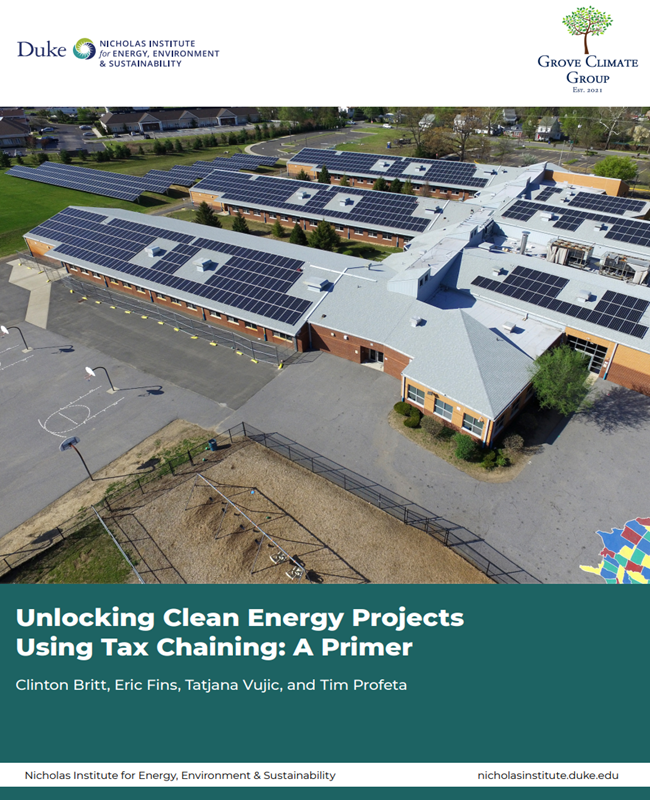Chaining is an emerging concept that marries two highly consequential provisions of the tax code established by the passage of the 2022 Inflation Reduction Act (IRA): Transferability of tax credits and direct (also known as elective) pay to nonprofit or public entities in lieu of tax credits.
Chaining links transferability and direct pay together by allowing those who earn a tax credit to sell the credit not to an entity with tax liability, but instead to an entity that can convert the tax credit into a cash payment.
This policy brief provides a high-level overview of chaining, describes its necessity to raising the capital needed to meet climate goals and other benefits intended by the IRA, outlines specific examples of how chaining would work in practice, provides recommendations for addressing potential abuses, and delves into the additional benefits related to enabling local communities’ access to clean technology and affordable low-carbon energy resources to the extent the IRA intended.
Besides unlocking additional capital, chaining could reduce the cost of capital, ease cash flow, and allow for different parties to share risk. The US Department of the Treasury is actively accepting comments on chaining until December 1, 2024. Through those comments, Treasury is seeking to ascertain, in part, how much more capital chaining can enable and how chaining would be executed.
